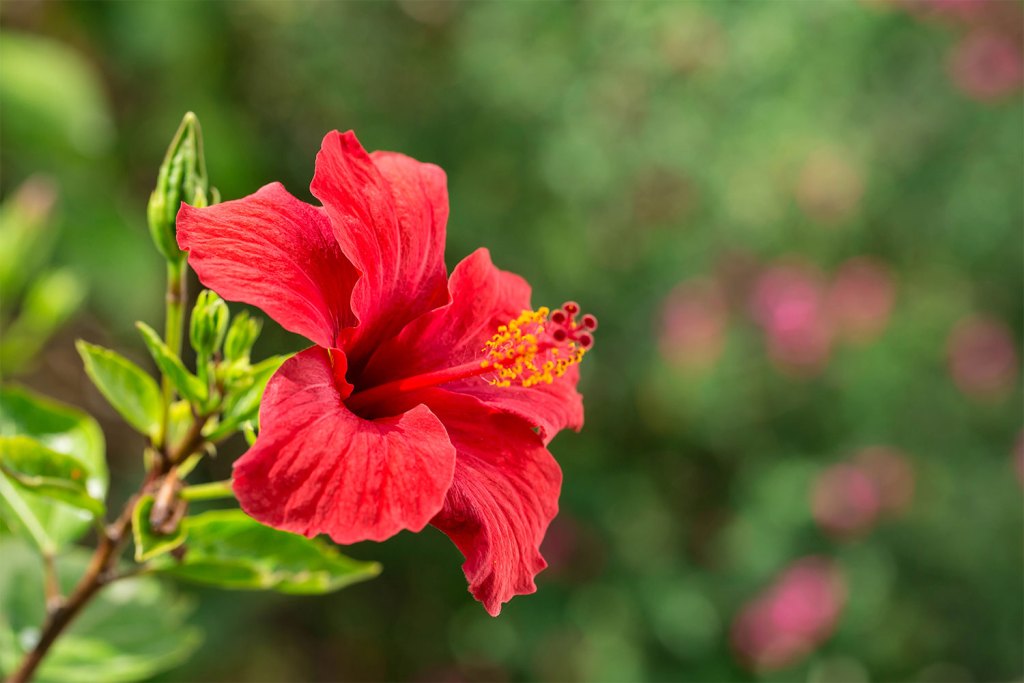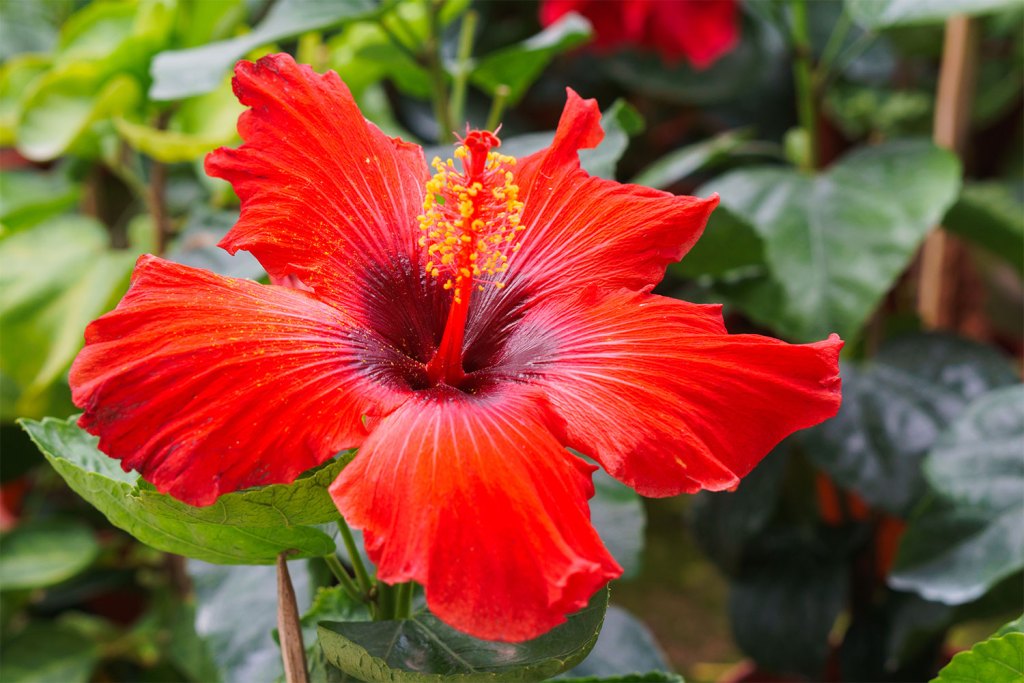Identifying pests on your hibiscus plant is the first step to protecting this gorgeous flower from bugs and insects. Once you know what unwanted guests are attacking your plant, you can come up with a battle plan to get rid of them so your flowers will thrive again. If left untreated, these pests can damage the leaves and flowers as well as spread bacteria and diseases throughout your plant.
Some common insects that destroy hibiscus are aphids, ants, thrips, coast flies, fungus, and mosquitoes. Most hibiscus plants become infected by insects due to poor management techniques. Watering and feeding your plant properly will make your plant healthy and will develop its natural resistance to these pests.
Another method of protecting them from insects is to encourage the growth of natural predators like beetles and dragonflies. In this article, you will learn how to get rid of bugs on your hibiscus plant, what kind of bugs like hibiscus flowers, and whether vinegar will kill aphids that often attack hibiscus plants.

How do I get rid of bugs on my hibiscus?
White bugs and other insects on the hibiscus plant can be terminated safely, easily, and effectively by the use of soap and water spray. You can get rid of these intruders by following these processes:
Step 1: Put three to five drops of your dishwashing liquid into a spray bottle.
Step 2: Fill the bottle to the brim with water and shake it to create soap lather.
Step 3: Spray the plants wherever you see white bugs.
Step 4: Wash the soap and dead bugs off the plants.
Step 5: Repeat every week or two to eradicate egg hatchlings and adult bugs.
Step 6: Use an insecticidal soap if the infestation persists for more than three weeks. This is a tested and validated way of completely getting rid of bugs on your hibiscus.
Step 7: Keep the plant healthy. This is the key to getting rid of pests on hibiscus plants.

What kind of bugs like hibiscus flowers?
The hibiscus flower is prone to bug infestations by the following:
Mealybugs
These are small, soft insects that thrive by sucking the sap from the plant. They multiply rapidly and are capable of destroying hibiscus flowers quickly. They are protected with cotton-like waxy substances. Because of how rapidly mealybugs spread, it is important to isolate the infected plants the moment you notice anything wrong. Mealybugs are vulnerable to a variety of predatory insects such as wasps and lady beetles; heavy rain can also help in keeping their population down.
White flies
These are small bugs typically found feeding on the backside of the leaf. They are also related to mealybugs. These insects suck the plant sap and produce a sticky substance called honeydew, which attracts fungal infection that makes the plants weak and reduces their photosynthesis. This causes the leaves to turn yellow, which can result in the death of the plant. The best way of protecting the hibiscus plant from this insect is to maintain its overall health.
Thrips
Generally, these puncture the outer layer of the plant and suck the juices from the plant. An infested hibiscus plant will become discolored and wither. The same management practices for mealy bugs apply to thrips.
Aphids
These are the most common type of insect found in hibiscus. They are small black, green, or white insects that invade the plant’s bud and flowers, and can normally be seen at the top of the stems or sometimes on the blooms. These insects suck the nutrient-rich liquids out of plants. They reproduce at an alarming frequency, which weakens the plant significantly and eventually destroys it. These intruders should be treated immediately. Although predators like crisps and ladybugs feed on this insect, they do not completely rid the flowers of these pests.
Will vinegar kill aphids on the hibiscus flower?
Like dishwashing soap, vinegar is lethal to insects and especially aphids. Vinegar should not to be used directly on hibiscus plants. Here's what to do:
Step 1: Mix one tablespoon of vinegar with about three to four drops of dishwashing liquid in a gallon of water.
Step 2: Use a spray bottle to spray the tops and bottoms of the leaves lightly.
Though it sounds like a daunting task, protecting hibiscus plants from insects really is achievable. Carefully tend your hibiscus and look closely for any pests or changes in your plant’s appearance. You can also encourage the growth of predators such as beetles and dragonflies.
Editors' Recommendations
- How to get rid of gnats without damaging your plant’s sensitive leaves
- Have a gross mealybug infestation on your plants? Try one of these remedies
- How to protect your plants from fall garden pests
- The best sprays to keep pests off your delicate hibiscus plants
- Should you use ladybugs as a pest control method?





